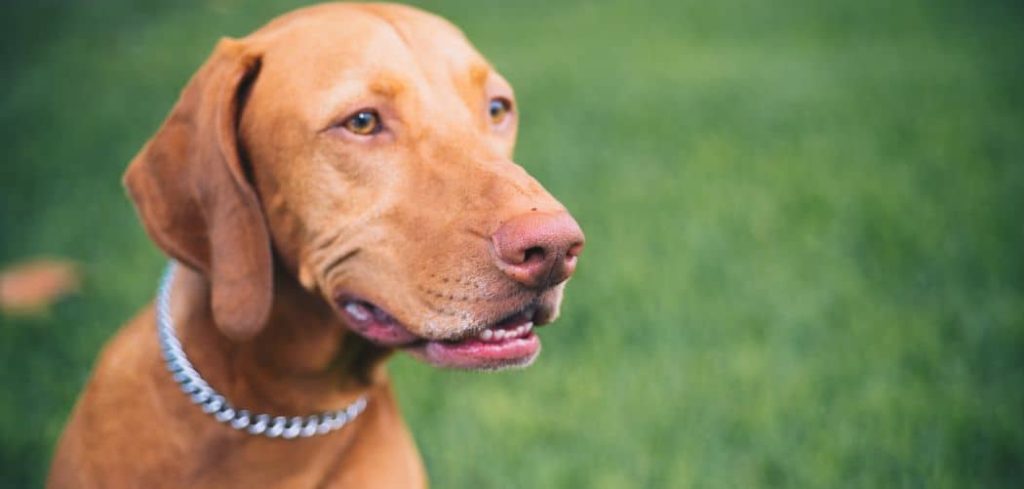Dogs panting while moving around can catch any dog owner off guard, especially when it seems excessive or unusual. Panting paired with constant motion may indicate physical discomfort or an underlying medical condition.
We outline the common causes of panting and moving around in dogs, what you can do at home, and when to seek veterinary help.
Dog Panting and Moving Around — Why It Happens
A dog panting combined with pacing or restlessness often signals anxiety, pain, or discomfort. Dogs may move around when they can’t find a comfortable position, such as with arthritis, digestive upset, or internal pain.
Stressful triggers like storms, fireworks, or separation can also cause this behavior.

Dog Panting and Moving Around: Common Causes
Pain or Discomfort
Pain often causes dogs to pant while moving. When a dog experiences joint pain, arthritis, or internal discomfort, motion can trigger panting and restlessness. Moaning or pacing may accompany these behaviors.
Additional signs include reluctance to jump or climb, limping, or sensitivity when touched.
Untreated pain can worsen over time, affecting your dog’s mobility and quality of life, making veterinary evaluation essential.
Read more: Dog Panting Excessively and Restlessness (Understand pacing behaviors)
Anxiety or Stress
Emotional distress can manifest as panting and constant movement. Dogs experiencing anxiety, separation stress, or environmental changes may pace, wander, or otherwise move around while panting.
Other signs can include whining, trembling, excessive licking, or hiding. Calming strategies such as consistent routines, a quiet environment, and anxiety aids like pheromone diffusers or wraps can reduce stress-induced panting.
Heat or Overexertion
Panting during movement may be caused by overheating or physical exertion. Dogs rely on panting to regulate body temperature, and moving around while hot can intensify panting.
Symptoms of overheating include bright red gums, excessive drooling, rapid heartbeat, or dizziness. Immediate cooling, shade, and water access are vital to prevent heatstroke, which can be life-threatening.
Heart or Respiratory Issues
Underlying cardiac or lung conditions can cause panting during activity. Dogs with heart disease, fluid in the lungs, or respiratory infections may pant heavily even during mild movement.
Other signs may include coughing, labored breathing, fainting, or fatigue. Early veterinary evaluation is crucial, as untreated heart or lung disease can progress rapidly.
Pain from Gastrointestinal Discomfort
Digestive upset can trigger panting while a dog moves around. Dogs with nausea, bloating, or gastrointestinal issues may pace, wander, or appear restless while panting.
Look for additional indicators like vomiting, diarrhea, decreased appetite, or repeated swallowing. Prompt attention to diet, hydration, and veterinary evaluation can prevent complications.
Neurological Conditions
Neurological disorders can result in abnormal panting and movement. Conditions affecting the brain or spinal cord may cause pacing, panting, or unusual restlessness.
Signs may include disorientation, tremors, seizures, loss of coordination, or abnormal posture. Early veterinary detection can help manage symptoms and improve your dog’s wellbeing.
Pain or Discomfort from Musculoskeletal Issues
Dogs with musculoskeletal injuries may pant while moving due to strain or soreness. Sprains, strains, or injuries from rough play or exercise can trigger excessive panting and restlessness.
Symptoms include limping, reluctance to jump, stiffness, or sensitivity when touched. Veterinary assessment ensures appropriate treatment and prevents worsening of the condition.
What to Do If Your Dog Is Panting and Moving Around
Ensure your dog is in a safe and comfortable environment. Remove potential hazards and provide a calm space to help them relax.
Observe patterns and triggers. Note when panting and movement occur, what activities precede it, and any other accompanying symptoms. This information is invaluable for veterinary assessment.
Address potential pain or discomfort. Limit strenuous activity and consider gentle handling. If your dog has joint issues or injuries, appropriate rest and veterinary treatment may be necessary.
Monitor for signs of stress or anxiety. Offer reassurance, calming tools, or consistent routines to reduce restlessness-induced panting.
Check environmental factors. Ensure your dog is not overheating or exposed to excessive physical exertion, and provide water and shaded areas when necessary.
When to Call or Visit Your Vet
Seek immediate veterinary attention if your dog shows:
Persistent or worsening panting while moving without obvious cause
Signs of severe pain, injury, or neurological issues
Vomiting, diarrhea, lethargy, or weakness
Labored breathing, coughing, or rapid heartbeat
Sudden behavioral changes, disorientation, or tremors
If pacing and panting happen frequently without an obvious trigger, it’s best to rule out medical causes. Early evaluation ensures timely intervention and prevents serious complications.
Read more: Dog Panting and Running Around (Why it happens)
Key Takeaway
Panting and moving around in dogs can be caused by pain, stress, heat, digestive upset, or serious medical conditions.
Observing your dog’s behavior, providing comfort, addressing potential causes, and consulting a veterinarian when necessary are key to ensuring your dog’s health and wellbeing. Timely attention can relieve distress and improve your dog’s quality of life.
